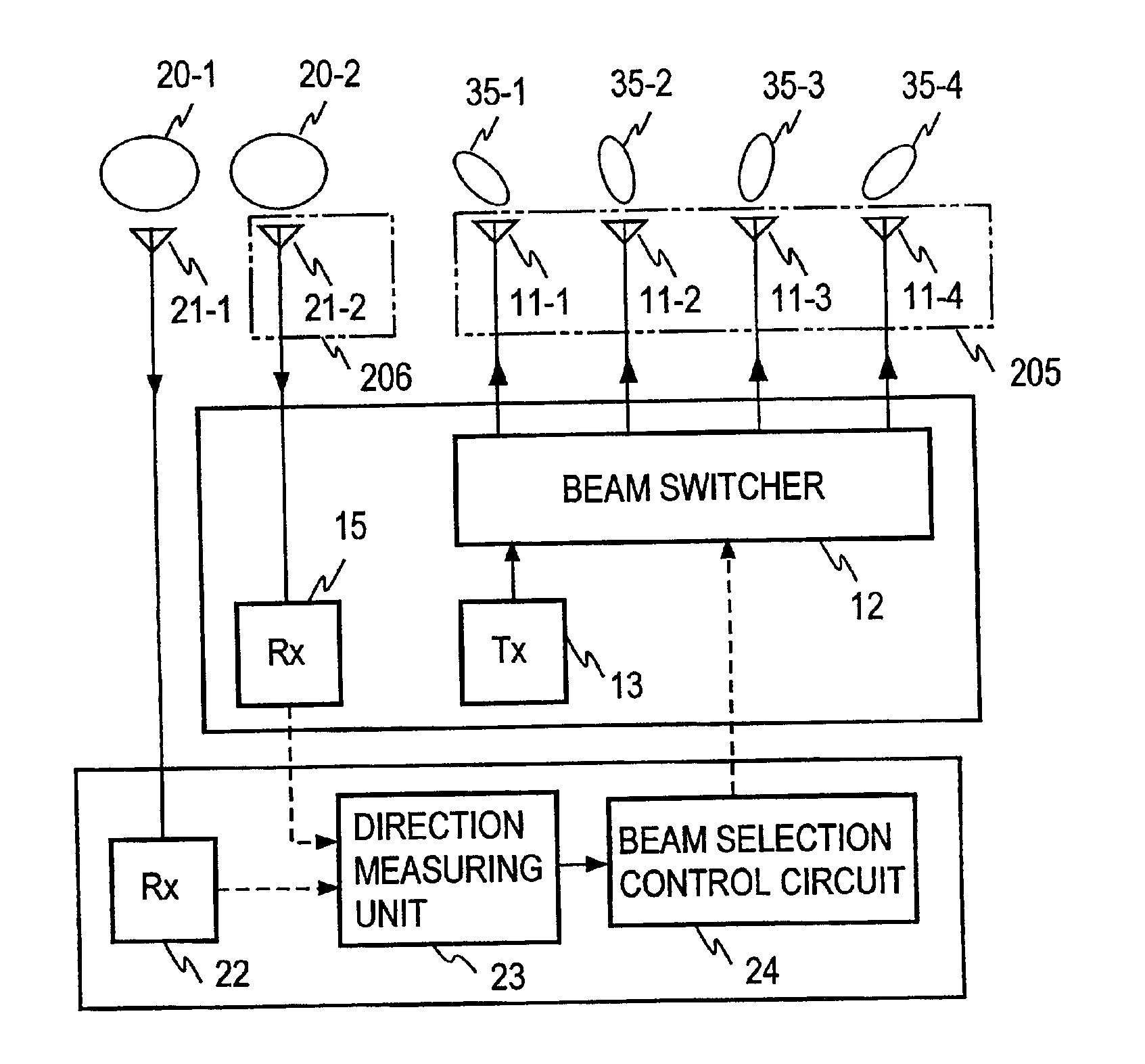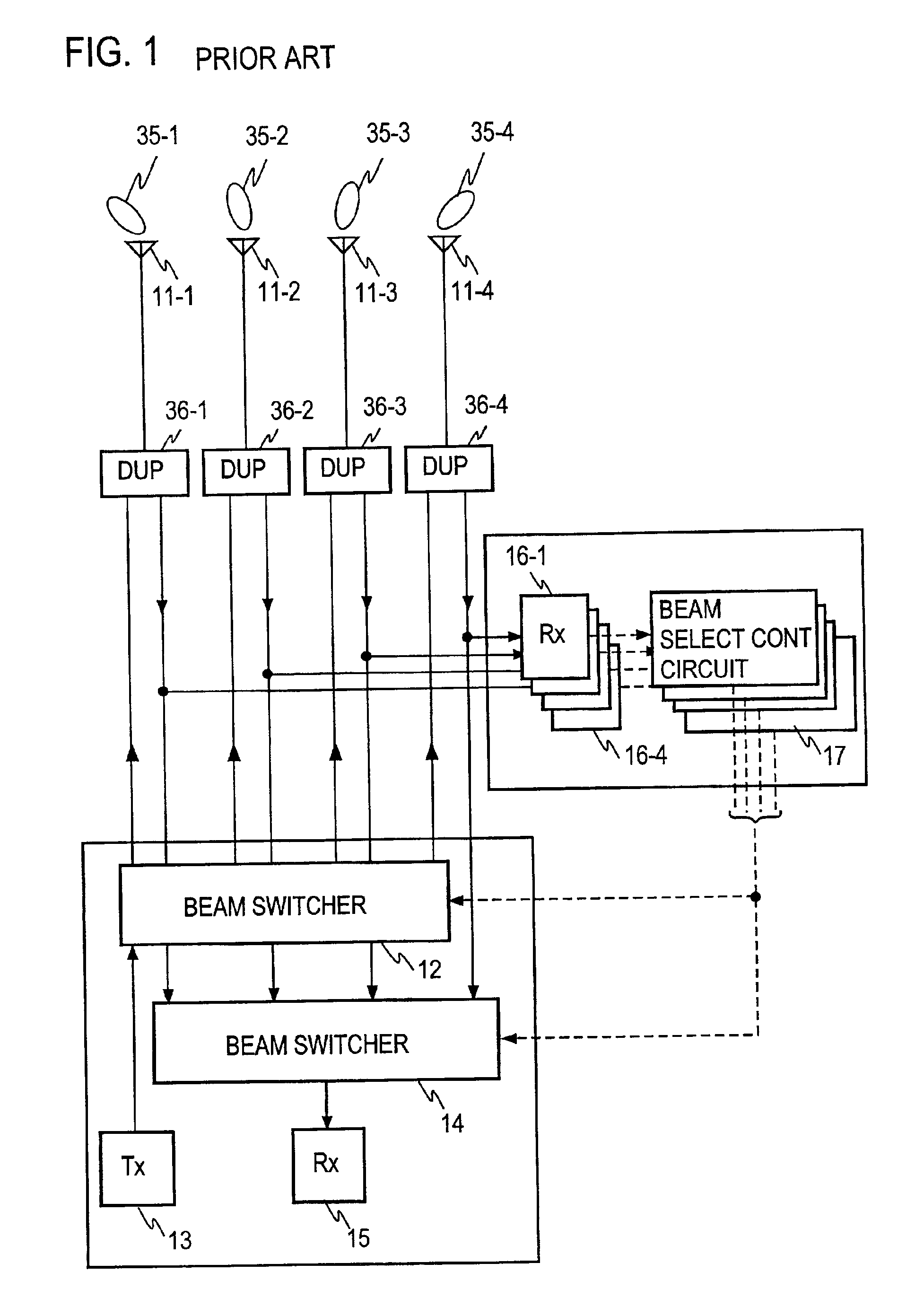Mobile communication base station equipment
a mobile communication and equipment technology, applied in the field of mobile communication base station equipment, can solve the problems of increasing the scale of equipment, increasing the number of antennas, and reducing the quantity of interference caused by radiated power, so as to achieve the effect of reducing the number of interferences
- Summary
- Abstract
- Description
- Claims
- Application Information
AI Technical Summary
Benefits of technology
Problems solved by technology
Method used
Image
Examples
Embodiment Construction
[0049]FIG. 5A shows an embodiment according to the first aspect of the present invention, and corresponding parts to those shown in FIG. 1 are designated by like reference characters as used in FIG. 1, it being understood that throughout the description to follow, a similar convention is followed. In this embodiment, there are provided a pair of antennas 21-1 and 21-2 which exhibit a wide angle directivity response (or wide angle beam). Each of the wide angle beam antennas 21-1 and 21-2 is capable of substantially covering a service area which is collectively covered by narrow angle beam antennas 11-1 to 11-4. It is to be understood that the both antennas 21-1 and 21-2 are located close to each other so as to be within the order of one-half the wavelength (λ) of radio waves involved, and have wide angle beams 20-1 and 20-2 having central axes which are parallel to each other.
[0050]A direction finder receiver 22 is connected to one of the wide angle beam antennas, 21-1, while a commu...
PUM
 Login to View More
Login to View More Abstract
Description
Claims
Application Information
 Login to View More
Login to View More - R&D
- Intellectual Property
- Life Sciences
- Materials
- Tech Scout
- Unparalleled Data Quality
- Higher Quality Content
- 60% Fewer Hallucinations
Browse by: Latest US Patents, China's latest patents, Technical Efficacy Thesaurus, Application Domain, Technology Topic, Popular Technical Reports.
© 2025 PatSnap. All rights reserved.Legal|Privacy policy|Modern Slavery Act Transparency Statement|Sitemap|About US| Contact US: help@patsnap.com



